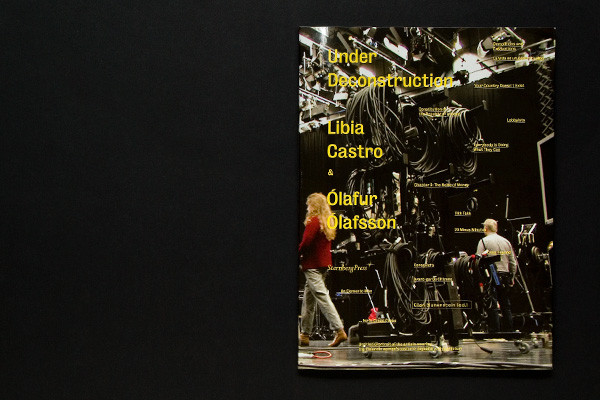ÓLAFUR ÓLAFSSON / LIBIA CASTRO, ICELANDIC PAVILION, VENICE BIENNIAL

Curators and artists work within the same realm and they often pursue the same interests. Although their respective modus operandi differs significantly, they together form part of the delicate construct of “exhibiting,” which also comprises the artwork, the space, and the viewer. On the level of production, the artist invents forms for his/her subject matter, while the curator formulates an argument that communicates between different forms and factors. They both team up to create an arrangement of the artworks in space and produce the presentation which can be accessed by the viewer. All of these factors are necessary to bring the exhibition into being and to make it a lively space for experience and thought. The intensity with which the Icelandic Pavilion team entered the collaboration with the artists Libia Castro and Ólafur Ólafsson and with which we all confronted our modes of thought and approaches to art hopefully filters through and can be sensed and experienced in the exhibition.
Diverse cultural and political backgrounds feed the Spanish-Icelandic duo’s practice, which can be described as an attitude of active engagement with the world that surrounds them.
Influences from (neo-)concretism, conceptualism, institutional critique, and relational aesthetics shape their artistic strategies and allow them to interpret the topics they are interested in. They work in a variety of media, from photography to video, sound and multi-media installations, and performative interventions in the exhibition and public space.
Castro and Ólafsson’s practice is both research- and reflection-based, and it is intuitive; their work, life, and other people’s lives (and societies) are interrelated and enrich each other. Their central artistic strategies – the appropriation and reinvention of given structures, portraying reality, and humor and play – question each other and are important devices to subvert traditional power relations. The idea of emancipation and the wish to engage with the human condition and its paradoxes drives their investigations, so they are placed in relation to life and the in-between of art and life. They deal with emancipatory questions, identity politics or subjectivity, and with the economic, social, and historical conditions that shape our society and culture and our conflicts such as (immaterial) labor and migration.
Through the last ten years, Castro and Ólafsson’s works have often been conceived in direct correlation with the sites the artists worked at, and they constantly renegotiated their relation to their collaborators and to the audience. Previous to their latest intense collaborations with the Icelandic composer Karólína Eiríksdóttir, they also cooperated with a choir, activists, asylum seekers, illegal immigrants, caregivers, lobbyists, and ministers.
Their installations are not participative in the sense that the audience would be directly involved in an activity, but rather that, within them, they debate the role of the spectator by confronting different spheres with each other. In this sense, the installation of Under Deconstruction is an invitation to the audience to discover the site, to appropriate the Icelandic Pavilion, and to make it each one’s own.
Ellen Blumenstein
Curator of the Pavilion of Iceland at the 54th International Art Exhibition - La Biennale di Venezia
